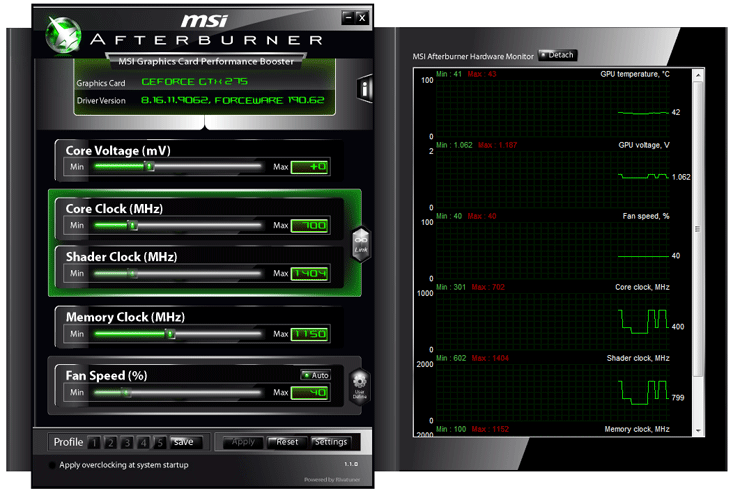
Step 4: Select the icon at the bottom of the left-hand menu. You can also select any other metrics you want to track, and deselect any you aren't interested in. Step 3: Under the heading Active hardware monitoring graphs, make sure that GPU Temperature is ticked by selecting it. Then select the Monitoring tab at the top of the window. Step 2: Select the cog icon on the left-hand side to open the Settings menu.

Step 1: Launch MSI Afterburner like you would any other application. MSI Afterburner has a robust built-in monitoring tool that lets you look at your graphics card core and memory temperatures, as well as a range of other important metrics. How to monitor your GPU temperatures (and more) with MSI Afterburner MSI just quietly announced the second QD-OLED gaming monitor MSI’s massive curved monitor may be a gamer’s dream machine

use the keyboard to change the values, not the mouse lol and work slow, this is important, if you want to get the best out of it, then take your time and find just the right frequency, add +50mhz on the clock, bench, if unstable: raise voltage (higher temperatures) or -10/20mhz until stable then move on memory, you just added 300mhz to the memory.How to overclock Intel’s Arc GPUs for better performance you have to say that the voltage kills first EVERY component and you should warn people about this, you have to say: t his GTX 1060 would normally last 6 years (I'm not sure, just giving an example) but with all that voltage, it will last only 3-4 years.so the safest OC is when the voltage is stock, yes, you will not get better scores, but the GPU will last longer (this depends on the money you have, if once 2 years you buy a new GPU, then play with it) third: the way you OC is not completely bad, but you should improve it. if you have an AMD GPU, then the sliders will show the actual core clock/memory/voltage, but if you have a Nvidia GPU, then the sliders will show what frequencies/voltage you add second: don't just bump the voltage all the way up, there might be people that will think: "oh, the benchmark crashed, but I did the same, oh maybe the voltage should be all the way up" well, no. first of all, the AMD GPUs sliders work differently from the Nvidia GPUs. Irst of all, if someone completely new to OC would watch this, they wouldn't understand it completely and broke the GPU, or freak out and say I don't want artifacts or crashing and thing like these.


 0 kommentar(er)
0 kommentar(er)
